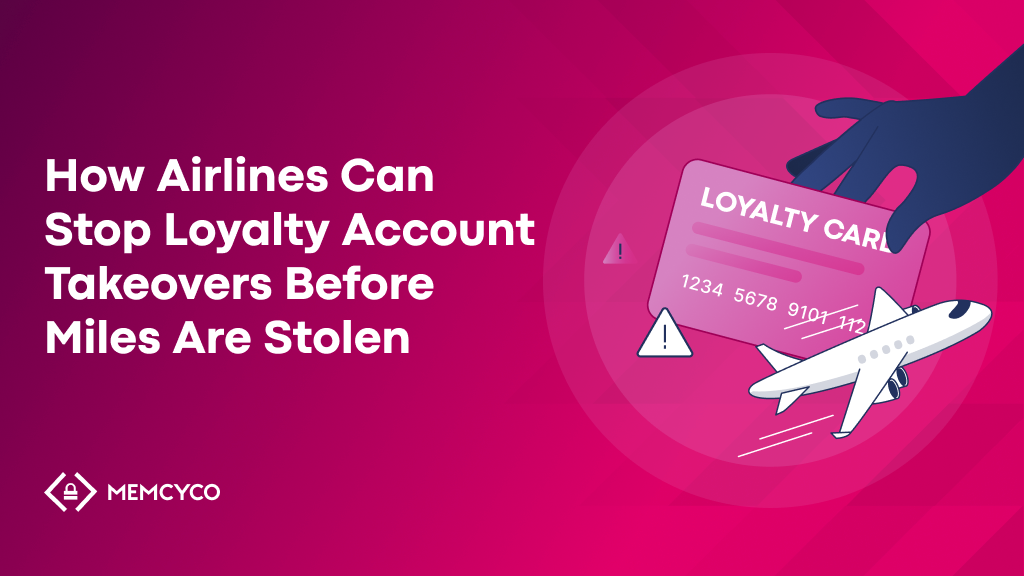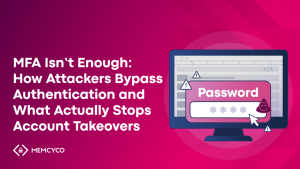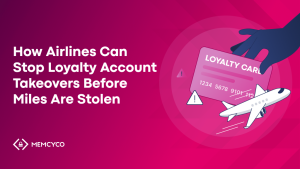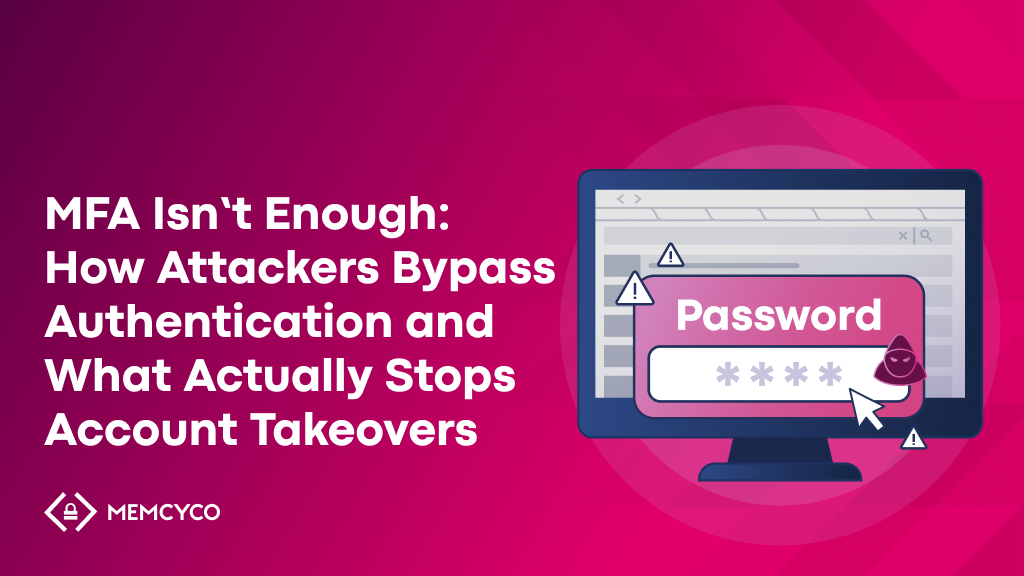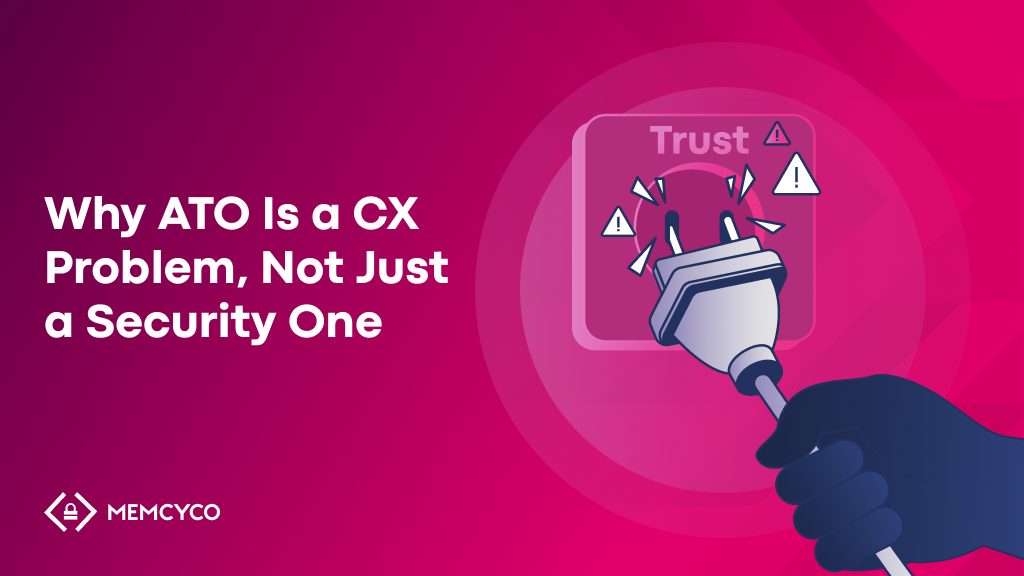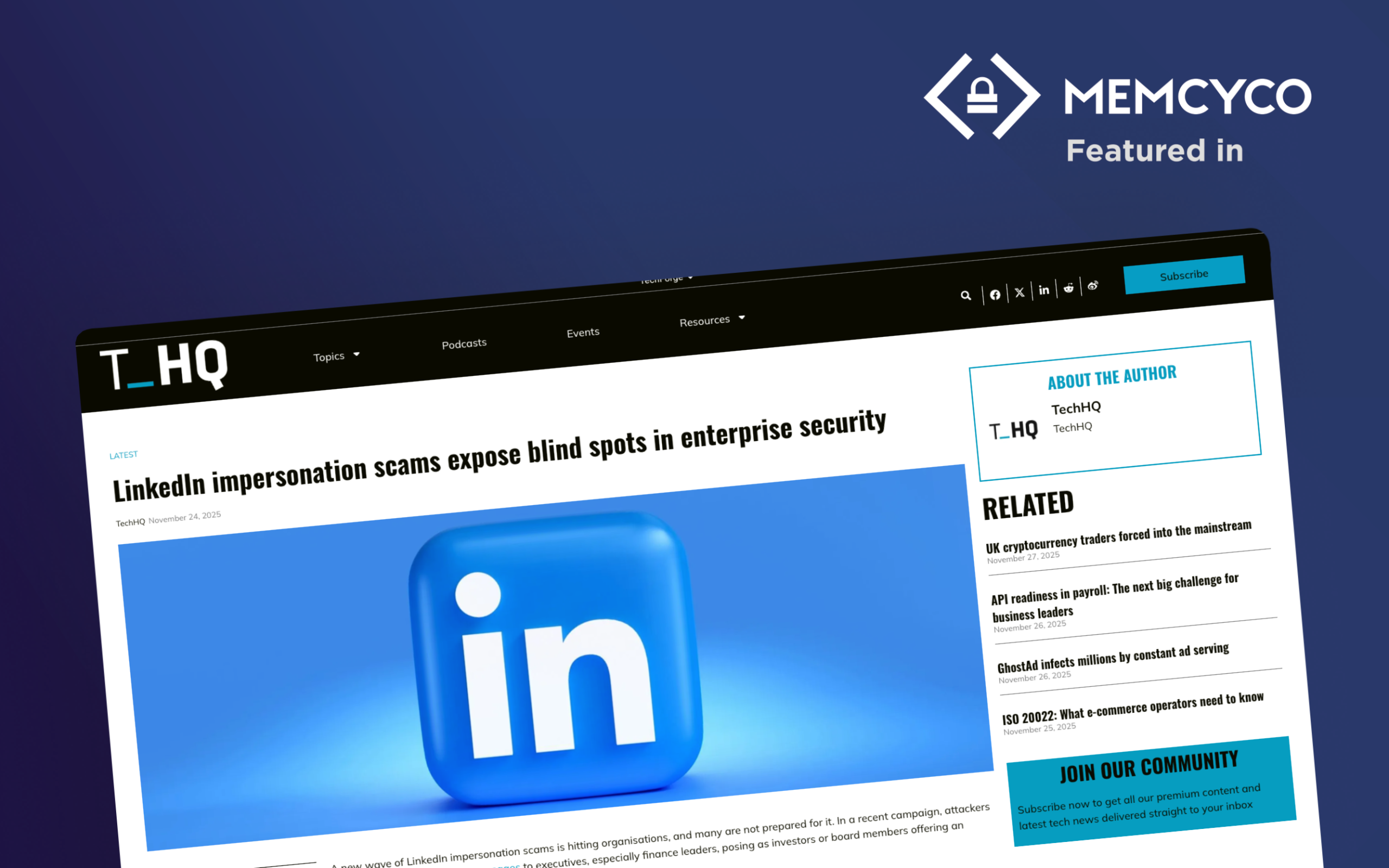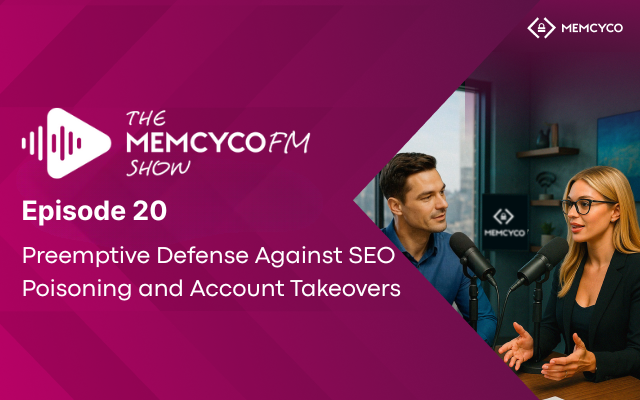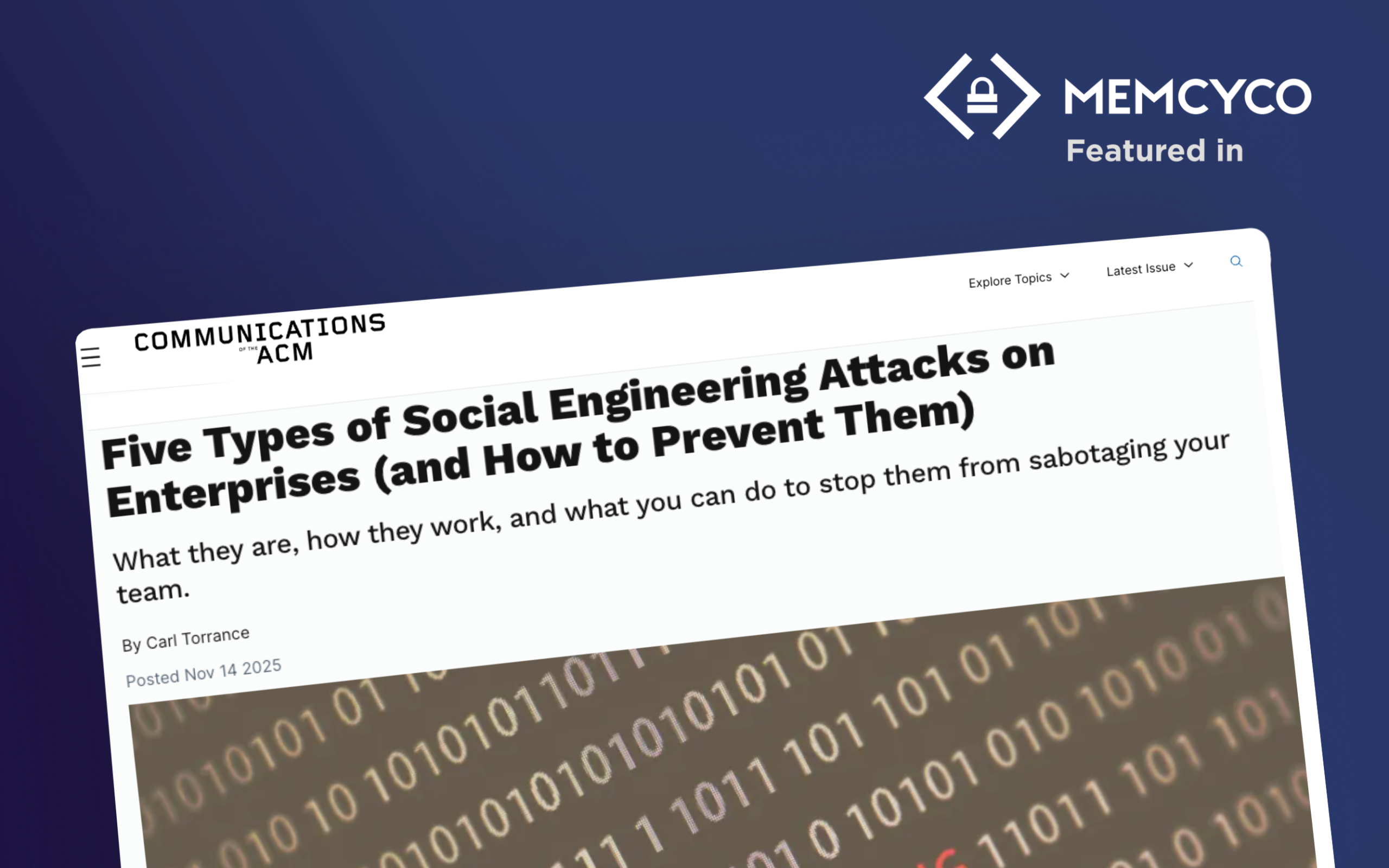The airline industry faces a critical security threat that cuts directly into profits and customer trust: loyalty account takeover (ATO) fraud.
Frequent flyer miles function as a highly liquid digital currency. This drives a surge in theft across US carriers and global networks. Attackers are increasingly sophisticated. They use automated kits and deepfake phishing to seize accounts and quickly convert stolen miles into cash. Traditional, reactive security can’t keep pace with this speed of modern ATO attacks.
The Most Effective Solution to Stop Loyalty ATO
Stopping airline loyalty account takeovers requires real-time account takeover fraud prevention. This technology detects fake login pages, intercepts stolen credentials, and blocks attackers before they redeem miles. Advanced solutions replace harvested credentials with decoy data. This alerts fraud teams immediately, preventing mileage theft at the source.
What Is Loyalty Account Takeover in Airlines?
Loyalty Account Takeover (ATO) is a cybercrime. An attacker compromises a customer’s loyalty or frequent flyer account. Once inside, the attacker seizes control to illegally use or redeem accumulated miles, points, or vouchers.
Loyalty ATO targets valuable rewards. These assets are often easier to monetize with less scrutiny than credit card fraud. Frequent flyer accounts often hold thousands of dollars in value. Fraudsters actively seek these points in underground markets.
Loyalty Currencies Are Now Liquid Assets
Loyalty points aren’t passive perks. They equal liquid currency, especially within the US airline ecosystem. Fraudsters target these points because they can be quickly converted into:
- Travel and Upgrades: Purchasing flights, often for resale.
- Retail Gift Cards: Instant conversion to cash via partner portals like Expedia.
- Physical Goods: Redeeming points for high-value electronics or merchandise.
- Transfers: Moving points to another account or partner program, complicating tracking and recovery.
The high value of these assets means that when an ATO occurs, the financial impact is substantial. This includes reimbursement costs, replacement flights, and customer service expenses.
Why Loyalty Account Takeovers Are Increasing Across Airlines
The need for robust account takeover fraud prevention is driven by converging factors. These make the airline sector a prime target:
| Pain Point / Driver | Description |
| Direct Financial Impact (Reimbursement) | Authorities in many markets force airlines to reimburse customers for stolen miles. This creates a direct financial hit. It’s the single biggest incentive for the company to care. |
| High Manpower & Operational Costs | Fraud teams are overwhelmed by the volume of cases. They require extensive manual investigations and significant customer care manpower to handle incidents. |
| Regulatory & Compliance Risk | Failure to actively deal with fraud can violate state and country regulations. This leads to large financial fines. |
| Customer Trust and Churn Issues | Customers who experience mileage theft lose faith in the brand’s security. This leads to loyalty program churn, customer attrition, and reputational damage. |
| Attacker Sophistication | Attackers use sophisticated AI-generated phishing and automated kits. They create convincing fake websites and launch massive credential harvesting campaigns at speed. |
How Attackers Steal Airline Loyalty Credentials
The modern attacker’s toolkit is diverse. It moves beyond simple breach list utilization. It focuses on targeted, real-time social engineering and credential harvesting.
Phishing Emails Mimicking Airline Brands
Attackers send emails using the airline’s branding and flight reservation language. They trick users into clicking a malicious link. This link directs them to a fake airline login page. AI-driven personalization amplifies these campaigns.
Smishing (SMS Expired Password Scams)
Smishing is mobile phishing. It uses urgent SMS text messages (e.g., claiming a password has expired). These links go to mobile-optimized fake sites. The goal is to steal credentials and two-factor authentication (2FA) codes.
Vishing (Voice Phishing)
Vishing involves phone calls where the attacker impersonates a technician. Deepfake voice technology can make these calls sound exactly like a trusted agent. This increases the risk of social engineering fraud.
Fake Airline Websites (Typosquatting, Homoglyphs)
Attackers use typosquatting (e.g., americanarilines.com) or homoglyph attacks. They deceive users into thinking they’re on the real site. In reality, users type their frequent flyer points theft credentials directly into an attacker’s server.
Infostealer Malware Capturing Saved Logins
Malicious software, such as an Infostealer, is downloaded to a victim’s device. It searches for and exfiltrates saved login credentials stored in browsers. This gives fraudsters direct access to accounts for how to stop mileage fraud.
Dark-Web Credential Kits and Automated Tools
The market for compromised airline accounts is lucrative. Attackers purchase automated kits and bot armies on the dark web. These streamline the process of testing harvested credentials. They execute redemption attempts instantly.
Why Traditional ATO Solutions Don’t Stop Loyalty Fraud
Traditional security solutions don’t provide effective real-time account takeover protection. They operate outside the critical attack timeline.
| Traditional Solution | Why It Fails Loyalty ATO |
| Scan-and-Takedown Services | These services are reactive. They operate in a separate silo. Takedowns take hours or days. This is ample time for the attacker to steal accounts and cash out miles. |
| Behavioral Anomaly Systems | These systems monitor user behavior after they log in. They flag unusual activity but generate high rates of false positives. Crucially, they fail to stop the initial credential theft. |
| Limited Visibility | These solutions can’t see or protect users. The attack’s first stage happens on external, fake airline login pages. |
| Customer Friction | Overly aggressive behavioral checks introduce friction. This leads to legitimate customers being blocked. It damages the digital experience. |
How Memcyco Stops Airline Loyalty Account Takeovers in Real Time
Memcyco’s Website ATO Protection solves the problem of detect fake airline login pages. It stops the attack at its origin—the credential harvesting stage. By infiltrating the attack timeline, Memcyco provides the only truly preemptive loyalty account takeover solutions.
1. Early Fake-Site Detection (Preemptive Protection)
Memcyco identifies fraudulent and fake login pages immediately after creation. This includes typosquatting and homoglyph domains. This proactive intelligence allows the airline to identify sites before victims land on them. It provides the earliest possible warning.
2. “Inside the Attack Timeline” Real-Time Visibility
Memcyco’s technology embeds to observe activity on the fake site itself. Airlines gain unprecedented, real-time visibility. They see the exact moment an unknowing customer attempts to log in on a malicious page.
3. Decoy Credential Swapping (Breakthrough Capability)
When a customer enters real credentials on a fake site, Memcyco intercepts those real credentials. It replaces them with synthetic Decoy Data before transfer to the fraudster’s server.
- Prevents Account Login: The decoy credentials are useless. The attacker can’t log into the loyalty account to steal miles.
- Enables Attribution: The fraud team receives a verifiable signal that the real credentials were stolen. The decoy data is marked. This allows the airline to secure the customer’s legitimate account proactively and pinpoint the attacker.
4. Fraudulent Redemption Blocking
Replacing stolen credentials with decoys prevents the attacker from successfully logging in. For any redemption attempt that might slip through, fraud teams receive instant, high-fidelity signals. These signals tie to the known, exposed customer, enabling immediate:
- Points Theft Prevention: Blocking redemption, transfer, and points usage.
- Lower Incident Load: Reducing the need for complex, reactive manual investigations.
5. Benefits for Fraud, Security, and Digital Teams
Memcyco provides immediate value across the organization. It connects directly to the organization’s SIEM/SOAR systems:
- Fraud Teams: Reduced incident volume, near-zero reimbursement costs tied to credential harvesting, and enhanced attribution.
- Security Leaders (CISOs): Elimination of the blind spot related to external credential theft. This provides true account takeover fraud prevention.
- Digital Teams: Enhanced brand trust and customer protection. This leads to higher loyalty program retention and reduced churn.
The Future of Airline Loyalty Fraud (What Leaders Must Prepare For)
Airline leaders must anticipate the coming wave of threats. The sophistication curve steepens rapidly:
- AI-Designed Phishing and Deepfakes: Phishing content will become hyper-realistic and fully automated. Deepfake voice technology could be used for social engineering to reset passwords.
- Commoditized Phishing Kits: Plug-and-play fish kits lower the barrier to entry. Every beginner hacker can generate large-scale phishing campaigns easily.
- Faster Fake-Site Creation: New tools enable attackers to spin up and tear down malicious domains in minutes. This frustrates slow, traditional takedown cycles.
- Attack Automation Across Partner Ecosystems: Attackers will exploit weaknesses in the airline’s loyalty partner network. They transfer and launder points, adding complexity to the frequent flyer points theft problem.
Protect frequent flyer accounts now—request a demo of Memcyco’s Website ATO Protection.
Frequently Asked Questions (FAQ)
How do fraudsters steal airline miles?
Fraudsters steal airline miles primarily through credential harvesting techniques. This includes phishing emails, smishing (SMS scams), and creating fake airline login pages through typosquatting. These attacks trick users into entering their login details. The fraudster then uses this data to take over the loyalty account.
Can airlines detect fake login pages in real time?
Yes, modern solutions like Memcyco’s Website ATO Protection detect fake login pages in real time. These advanced platforms monitor external websites and immediately identify fraudulent domains. They move beyond slow, reactive takedown methods.
What’s the best way to prevent loyalty account takeover?
Preventing loyalty account takeover requires a preemptive solution. This solution infiltrates the attack timeline. It detects the fake login site. It intercepts the stolen credentials as they are typed. Finally, it replaces them with synthetic Decoy Data to neutralize the attack before the fraudster logs in.
How does Memcyco differ from traditional ATO solutions?
Traditional ATO solutions are reactive. They focus on behavioral anomalies after login or slow domain takedowns. Memcyco is preemptive. It focuses on the moment of credential theft. It’s the only solution that detects fake sites at creation, intercepts and neutralizes stolen credentials with decoys, and provides real-time alerts on exposed customers.
Secure Your Loyalty Program Before the Next Attack
The risk to airline loyalty programs isn’t theoretical; it’s an operational reality. Loyalty accounts are a hyper-liquid currency. Attackers evolve faster than traditional, reactive tools. To protect your program’s integrity and your customers’ trust, you need a solution that stops the attack before it ever reaches your front door.
